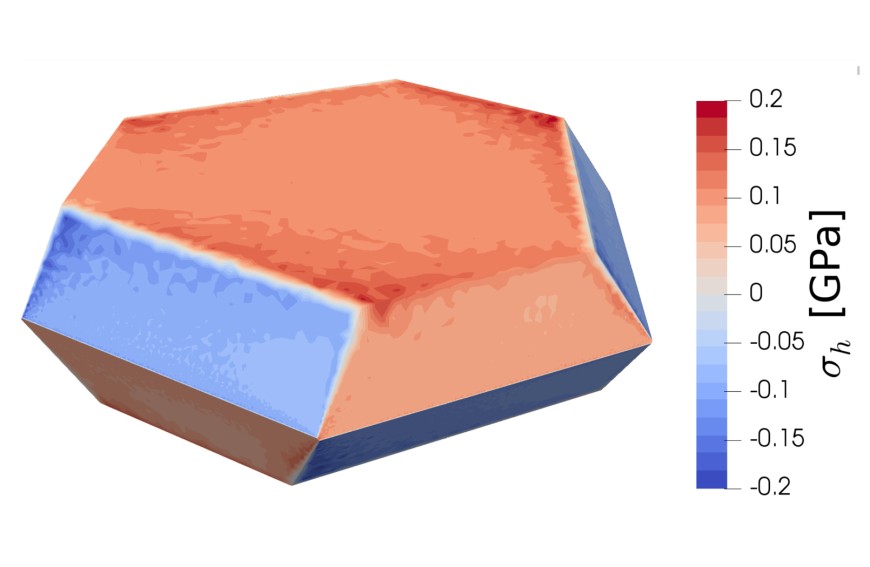The influence of anisotropic surface stresses and bulk stresses on defect thermodynamics in LiCoO2 nanoparticles
New Publication in “Acta Materialia”
2018/07/28

Authors: Peter Stein, Ashkan Moradabadi, Manuel Diehm, Bai-Xiang Xu, Karsten Albe
The demand for higher specific capacity and rate capability has led to the adoption of nanostructured electrodes for lithium-ion batteries. At these length scales, surface effects gain an appreciable impact not only on the electrochemical and mechanical behavior of the electrode material, but also on defect thermodynamics. The focus of this study is the distribution of surface-induced bulk stresses in a LiCoO2 nanoparticle and their impact on the migration of Li-vacancies. LiCoO2 is prototypical cathode material, the the deintercalation is initially mediated by the vacancy mechanism.
For this investigation, elastic parameters and anisotropic surface stress components are computed using Density Functional Theory calculations. They are incorporated into a surface-enhanced continuum model, implemented by means of the Finite Element method. The particle geometry is derived from a Wul? construction, and changes in the formation energy and migration barriers of a Li vacancy are determined using the defect dipole tensor concept.
Within the considered nanoparticle, the surface stresses result in a highly heterogeneous bulk stress distribution with a vortex-like transition region between the tensile particle core and its non-uniformly stressed boundaries. Both the center and the exterior of the particle show enhanced formation energy and migration barriers for of a Li vacancy. These experience a reduction in the transition region in the particle, culminating in a peak increase in vacancy diffusivity and ionic conductivity by circa 10% each. For a particle at a length-scale of 10 nm, this yields an overall increase in ionic conductivity by a mere 0:8 %. This surface stress-enhanced conductivity decays rapidly with increasing particle size.



